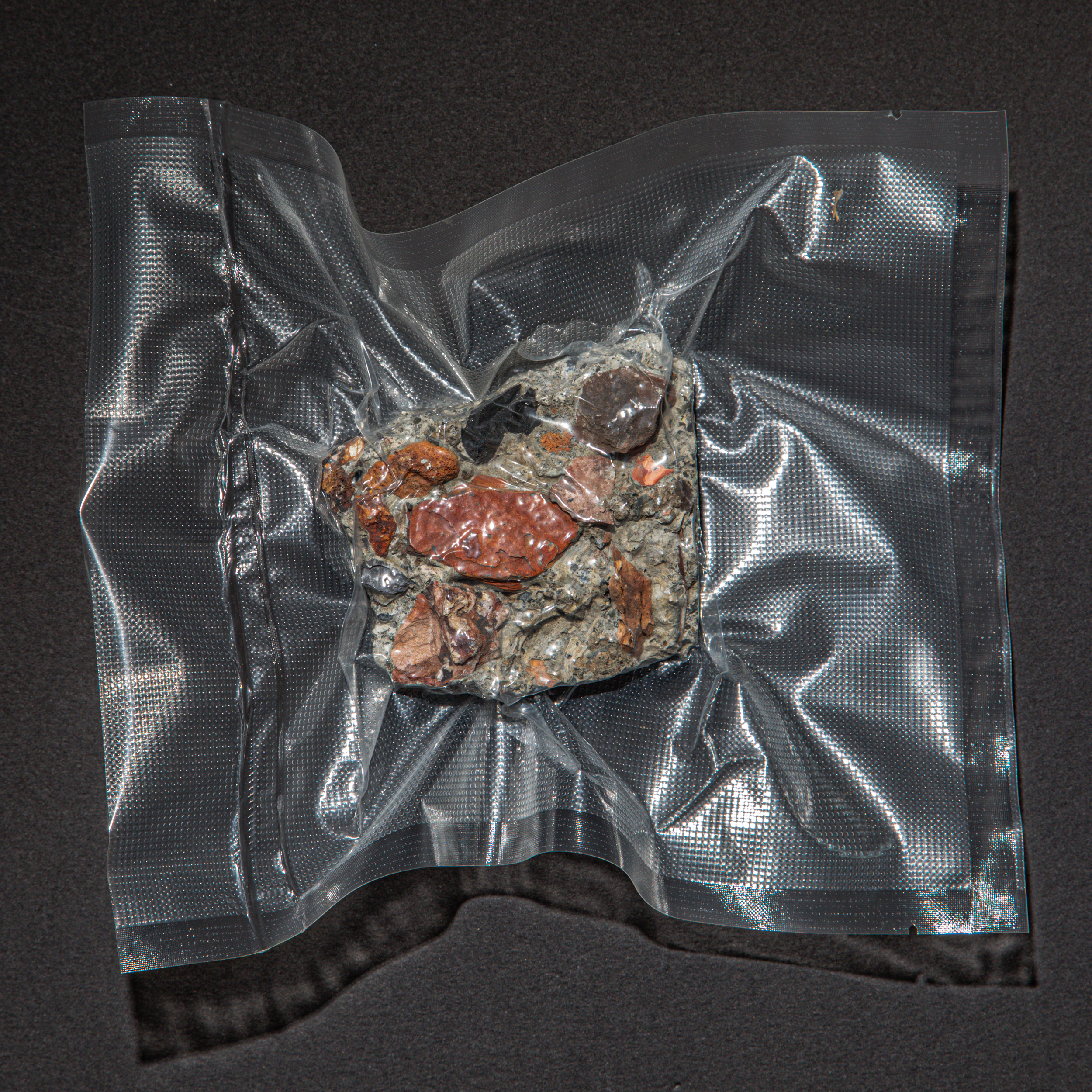Experiments in Strata
December 2022, West Hall Gallery, Rensselaer Polytechnic Institute, Troy, NYConcrete, compost material, insulation foam, plastic waste, shrink wrap, asphalt
Digital prints:
Asphalt Strata I-X, 14” x 19”
Domesticated Wastscape, 43” x 57”
Video:
Rock eater, 01:56 min.

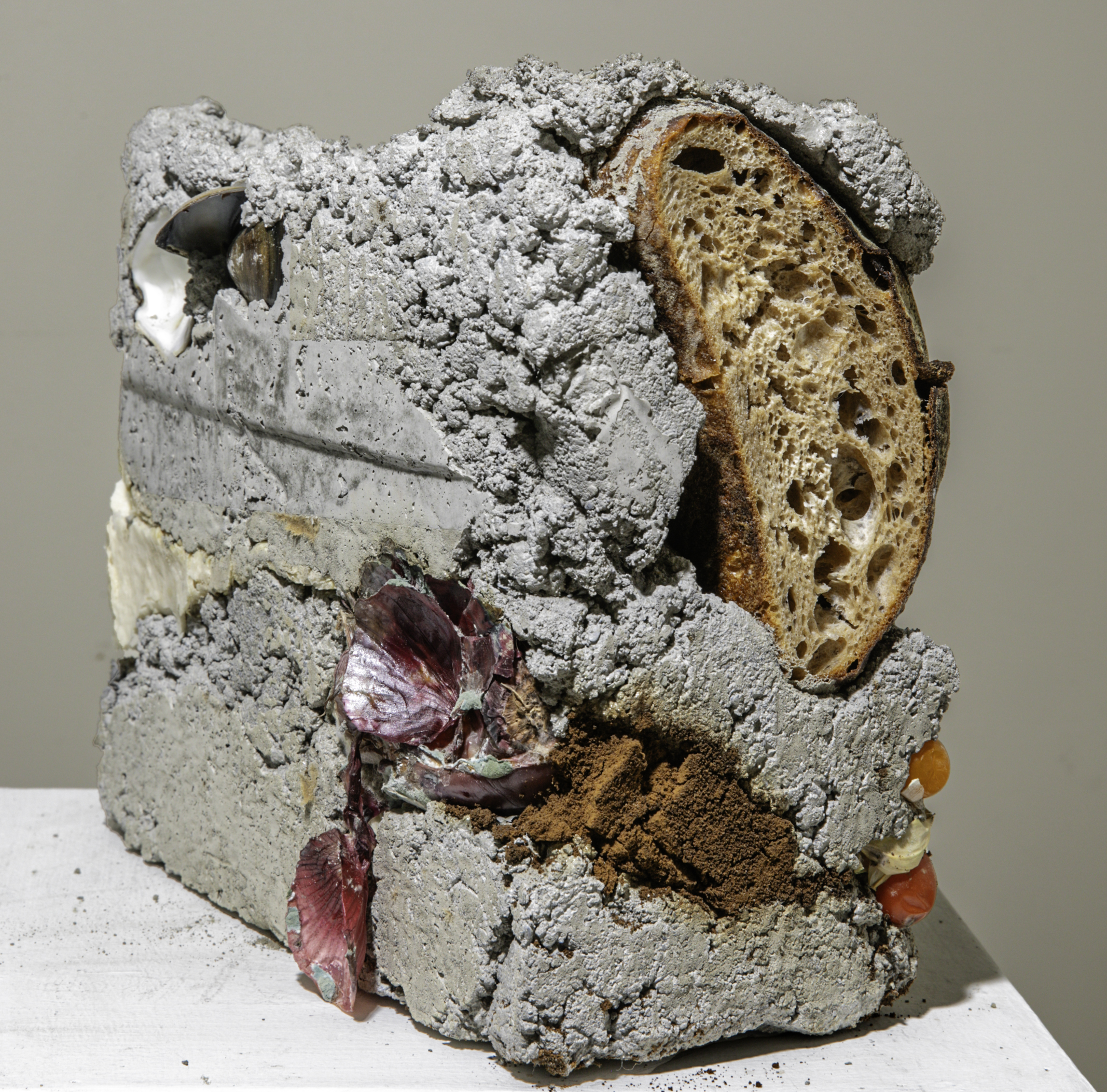

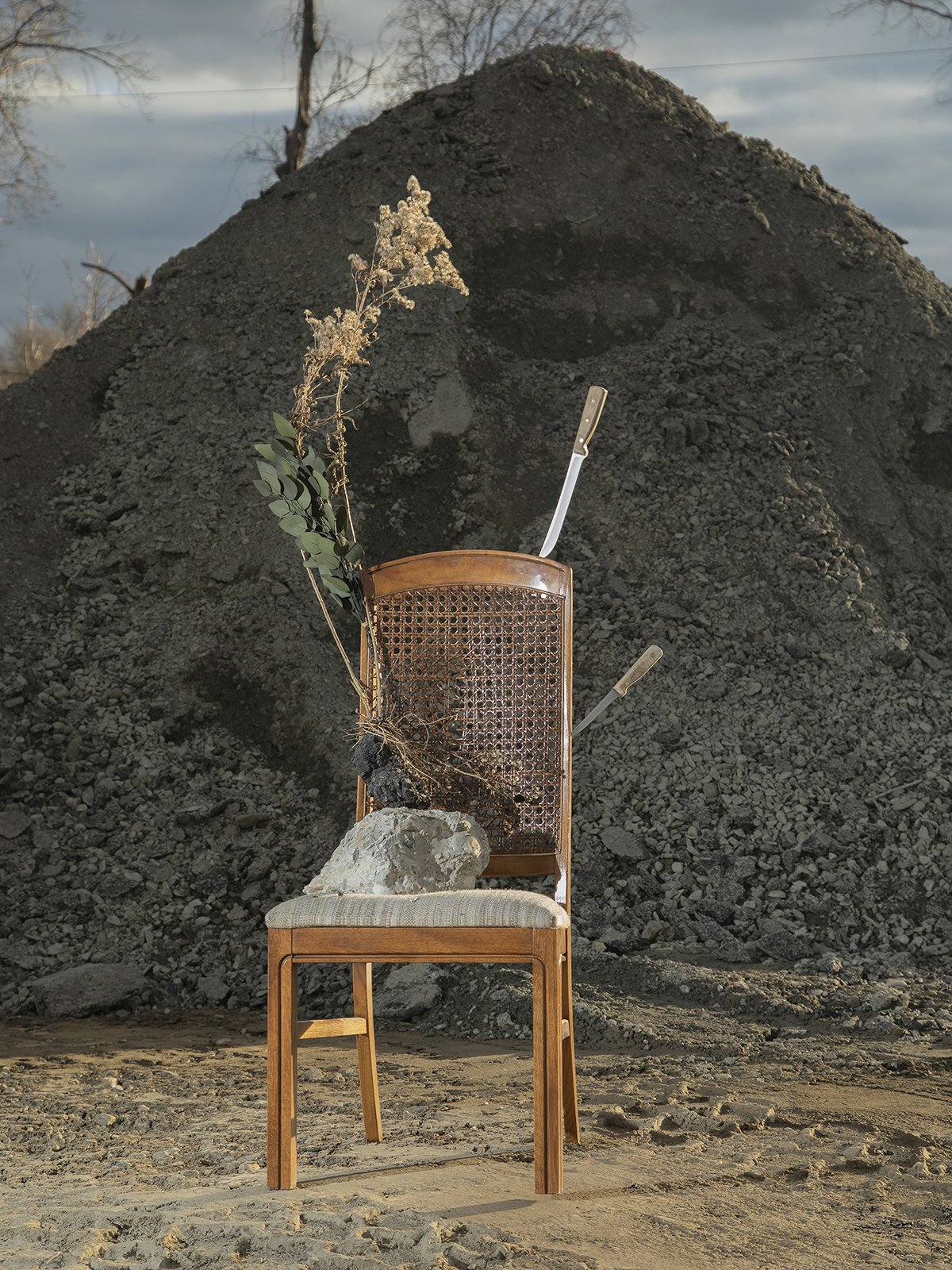
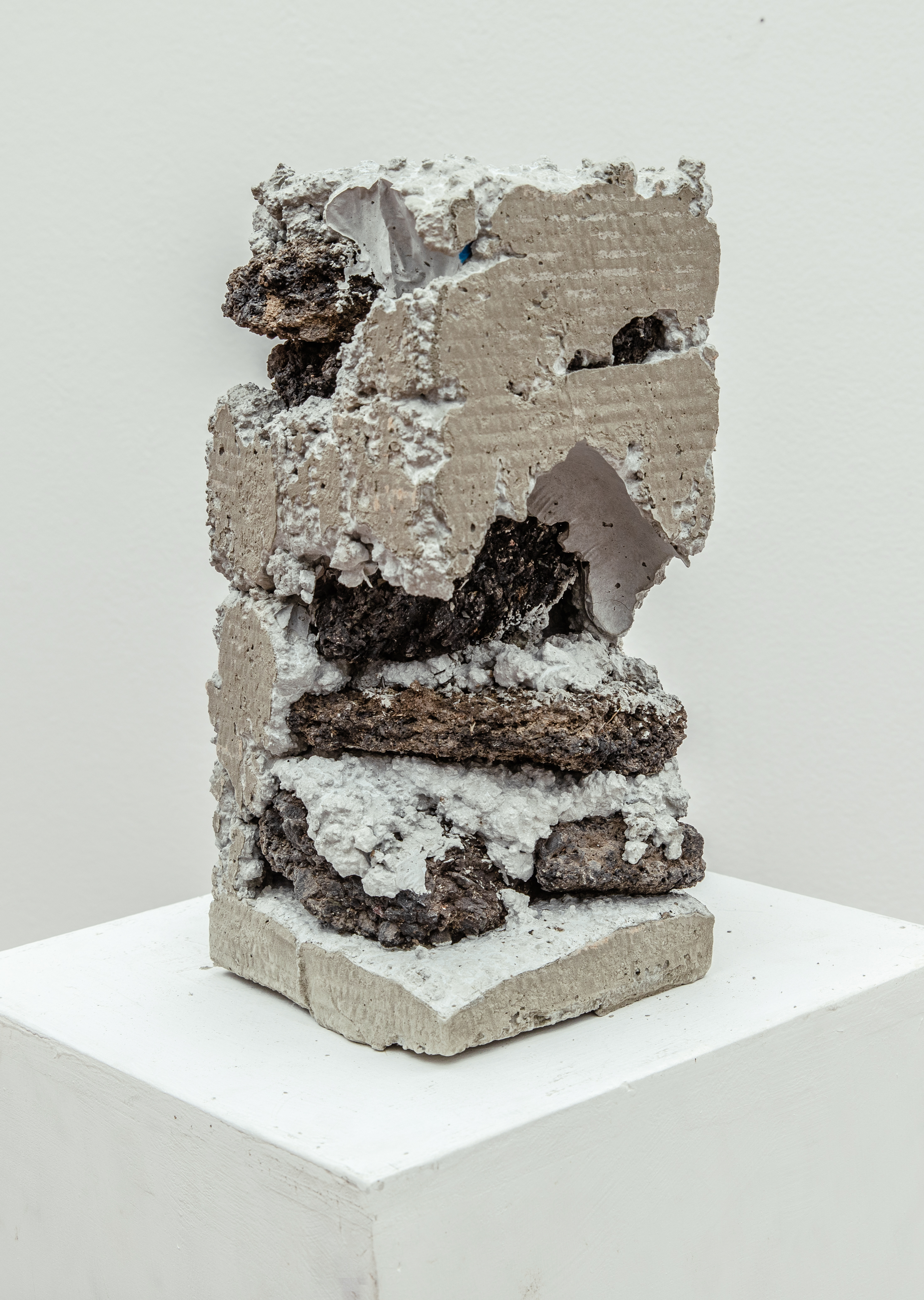
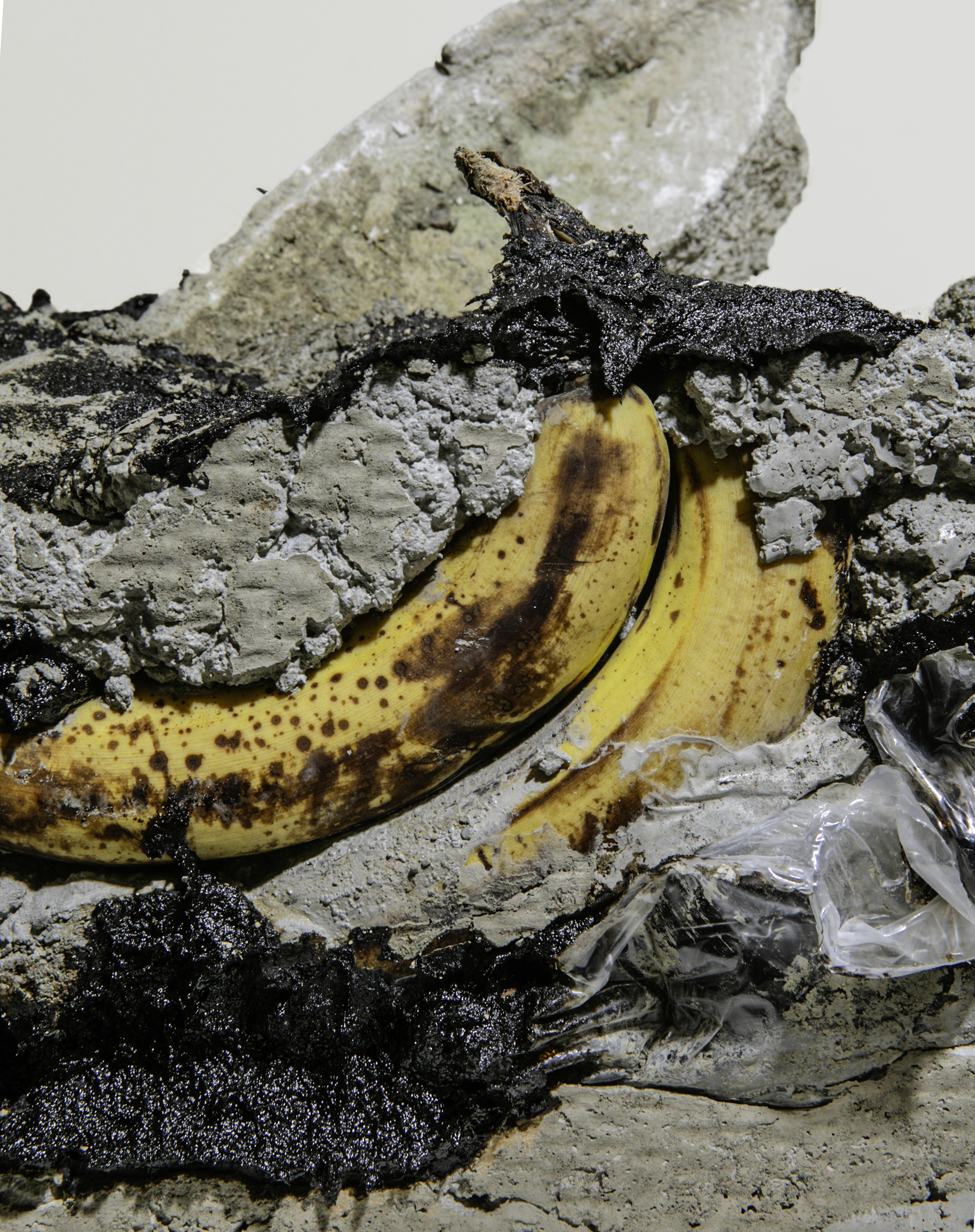
2022-2023
cement, compost, planatation agricultural products, asphalt tar, waste (discarded plastics, agricultural netting, building materials, insulation foam, and styrofoam)
These sculptures consider materials which are layered into soil via disposal practices, creating new layers of strata to be read by future stratigraphers. The Phytolyths of pollen from plantation agriculture (most arguably maize, but likely also bananas and wheat) has been argued by geographers as a possible stratigraphic marker for the Anthropocene.
Lewis, Simon L and Mark A Maslin. “A Transparent Framework for Defining the Anthropocene Epoch.” The Anthropocene Review 2, no. 2 (2015): 128–46.








The “Anthropocene” wrongly attributes blame to all humans uniformly. The term re- naturalizes humans and flattens anthos into a geologic feature, which abdicates responsibility and occludes power dimensions (political, social, and economic) tha are more acutely the causes of a new epoch and the concurrent ecological crisis. In a way, it extrudes differentiated bodies into a plastic sameness across the species. The gestures of one body refract, as if merely images, and warp upwards into an entity that somehow produced enough cement to outweigh all biomass on earth, among many other impacts. The term perpetuates humans as the arbiters of geological change, maintaining a hierarchy of agency oriented away from nonhumans and designed materials, as well as away from systems like plantation agriculture or capitalism.
Yet any version of this epoch—plantationocene, capitalocene—relies on the notion of stratigraphy to denote a proposed new rock segment in Earth’s strata. The geologic record has been one of scientists’ best models for understanding global climate change in reference to past climactic states. But a new kind of aesthetic geologic archive for an epoch located in an intra-acting present-future (Karen Barad) is required for addressing the pernicious challenges of scale it presents. “Anthropocene” becomes useful again, for its ability to figure relationships between differentiated anthro bodies and timescales that elude individual cognition.
Future stratigraphers may address the layers of strata contributed by human civilization by sifting through industrial archeological sites (like Poestenkill Gorge) or ruptures of asphalt in subsoil (as is the case near the Ingalls Avenue Boat Launch, pictured in digital photographs). The material juxtapositions and sculptures included as part of open studios are sourced from these and other sites; they are experiments in strata. Vacuum-sealing and shrink-wrapping processes, like the heat and pressure of geologic transformation, suffocate anthropogenic rocks into layers, and into ambiguous future specimens. Preservation is called into question; a skin of plastic is used to coat an infrastructural skin—asphalt which severs us from soil.
Improperly mixed or waste aggregates form striking speculative geologies—concrete laced with splinters of wood and slag with iron-stained red gravel. Pollen from plantation agriculture (most arguably maize, but likely also bananas and wheat) becomes a stratigraphic marker for the Anthropocene. While these materials co-create geologic time with us, and with each encounter, they are not fetish objects of vitality. As opposed to seeing them for their unexpected manifestations, we can see our relation to them through affect and aesthetics as a comingled agency, constantly opening towards the future.
In fact, their future stratigraphic existence has agency because it is already a haunting presence. As change to the geologic makeup of the earth happens over time scales that exceed our comprehension, we will refigure again and again the agency of such objects. Future stratigraphers will not attribute these marks to our species as a whole, but to industries, imaginaries, and infrastructures that created and preserved their presence.



